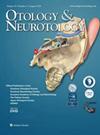Investigating the Minimal Clinically Important Difference for AzBio and CNC Speech Recognition Scores.
IF 1.9
3区 医学
Q3 CLINICAL NEUROLOGY
引用次数: 0
Abstract
OBJECTIVE To assess the minimal clinically important difference (MCID) values for cochlear implant-related speech recognition scores, which have not been previously reported. STUDY DESIGN Retrospective cohort. SETTING Tertiary referral center. PATIENTS Eight hundred sixty-three adult patients who underwent cochlear implantation between 2009 and 2022. MAIN OUTCOME MEASURES MCID values for consonant-nucleus-consonant (CNC) word scores and AzBio sentences in quiet and noise scores using distribution-based methods (half-standard deviation, standard error of measurement, Cohen's d, and minimum detectable change). RESULTS In this cohort, the mean preoperative CNC word score was 13.9% (SD, 15.6). The mean preoperative AzBio sentences in quiet score was 19.1% (SD, 22.1), and the mean preoperative AzBio sentences in noise score was 13.0% (SD, 12.0). The average MCID values of several distribution-based methods for CNC, AzBio in quiet, and AzBio in noise were 7.4%, 9.0%, and 4.9%, respectively. Anchor-based approaches with the Speech, Spatial, and Qualities of hearing patient-reported measure did not have strong classification accuracy across CNC or AzBio in quiet and noise scores (ROC areas under-the-curve ≤0.69), highlighting weak associations between improvements in speech recognition scores and subjective hearing-related abilities. CONCLUSIONS Our estimation of MCID values for CNC and AzBio in quiet and noise allows for enhanced patient counseling and clinical interpretation of past, current, and future research studies assessing cochlear implant outcomes.调查 AzBio 和 CNC 语音识别评分的最小临床意义差异。
目的评估人工耳蜗相关语音识别评分的最小临床重要差异(MCID)值,此前尚未有相关报道。主要结果测量采用基于分布的方法(半标准差、测量标准误差、Cohen's d 和最小可检测变化)计算辅音-核-共振(CNC)单词得分和 AzBio 句子在安静和噪声中得分的 MCID 值。结果在该队列中,术前 CNC 单词得分的平均值为 13.9%(SD,15.6)。术前 AzBio 句子在安静环境中的平均得分率为 19.1%(标度为 22.1),术前 AzBio 句子在噪音环境中的平均得分率为 13.0%(标度为 12.0)。几种基于分布的 CNC、AzBio in quiet 和 AzBio in noise 方法的平均 MCID 值分别为 7.4%、9.0% 和 4.9%。基于锚点的方法与患者报告的语音、空间和听力质量测量方法在静音和噪声中的 CNC 或 AzBio 分数上没有很高的分类准确性(ROC 曲线下面积≤0.69),突出了语音识别分数的提高与主观听力相关能力之间的微弱关联。
本文章由计算机程序翻译,如有差异,请以英文原文为准。
求助全文
约1分钟内获得全文
求助全文
来源期刊

Otology & Neurotology
医学-耳鼻喉科学
CiteScore
3.80
自引率
14.30%
发文量
509
审稿时长
3-6 weeks
期刊介绍:
Otology & Neurotology publishes original articles relating to both clinical and basic science aspects of otology, neurotology, and cranial base surgery. As the foremost journal in its field, it has become the favored place for publishing the best of new science relating to the human ear and its diseases. The broadly international character of its contributing authors, editorial board, and readership provides the Journal its decidedly global perspective.
 求助内容:
求助内容: 应助结果提醒方式:
应助结果提醒方式:


